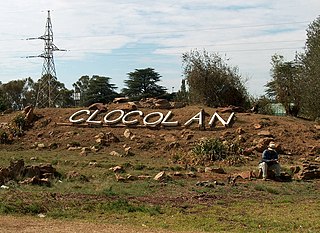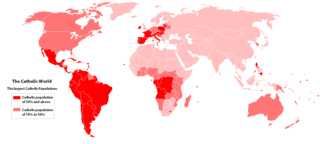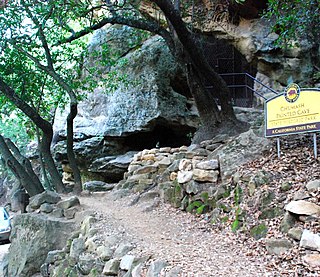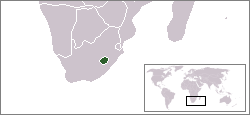| Location | Clarens sandstone |
|---|---|
| Region | Lesotho |
| Coordinates | 28°47′4″S28°14′1″E / 28.78444°S 28.23361°E Coordinates: 28°47′4″S28°14′1″E / 28.78444°S 28.23361°E |
| History | |
| Periods | Neolithic |
| Cultures | San people |
The Liphofung (“place of the eland”) Historical Site includes a cave which occupies an important place in Lesotho history. It is the smallest of the Lesotho Highlands Development Authority (LHDA) reserves, at about 4.5 ha (11 acres), but has been intensively developed. The cave is a large overhang in the Clarens sandstone, which is a typical feature of the Lesotho lowlands region. Originally used by the San people and other Neolithic people, the walls contain important rock art and a rich archaeological deposit of Stone Age implements lies beneath the floor. Later, King Moshoeshoe the Great used the cave as a stopover when visiting that part of the kingdom.

Lesotho, officially the Kingdom of Lesotho, is an enclaved country–the only one in the world outside of the Italian peninsula–within the border of South Africa. It is just over 30,000 km2 (11,583 sq mi) in size and has a population of around 2 million. Its capital and largest city is Maseru.

The San or Saan peoples, also known as the Bushmen, are members of various Khoesān-speaking indigenous hunter-gatherer groups that are the first nations of Southern Africa, and whose territories span Botswana, Namibia, Angola, Zambia, Zimbabwe, Lesotho and South Africa. There is a significant linguistic difference between the northern peoples living between the Okavango River in Botswana and Etosha National Park in northwestern Namibia, extending up into southern Angola; the central peoples of most of Namibia and Botswana, extending into Zambia and Zimbabwe; and the southern people in the central Kalahari towards the Molopo River, who are the last remnant of the previously extensive indigenous Sān of South Africa.
The Neolithic, the final division of the Stone Age, began about 12,000 years ago when the first development of farming appeared in the Epipalaeolithic Near East, and later in other parts of the world. The division lasted until the transitional period of the Chalcolithic from about 6,500 years ago, marked by the development of metallurgy, leading up to the Bronze Age and Iron Age. In Northern Europe, the Neolithic lasted until about 1700 BC, while in China it extended until 1200 BC. Other parts of the world remained broadly in the Neolithic stage of development, although this term may not be used, until European contact.
The site is located in a tributary-stream valley of the Hololo River, off the main route from Butha-Buthe to Oxbow and Mokhotlong. Access is via a concrete road which is passable for all vehicles. A visitors' centre, featuring a display of Basotho culture and San rock art has been developed, along with restrooms and a small shop. The site is a popular destination of school groups and tourists traveling to Oxbow, and light refreshments are available. [1]

Butha-Buthe is the capital city or camptown of the Butha-Buthe District in Lesotho. It has a population of 35,108. It is named for Butha-Buthe Mountain to the north of the town, which King Moshoeshoe I used as his a fortification and headquarters from 1821 to 1823, during his war with the Zulu king Shaka. The city's name means "place of deposits."

Mokhotlong is a city and seat of Mokhotlong District in the mountainous northeastern part of Lesotho. It is the first major city with an airport along the road from South Africa across the Sani Pass, near the Maloti Mountains. The name of the city is a word in Sesotho, the language of the people of Lesotho, meaning "Place of the Bald Ibis." Thabana Ntlenyana, the highest point in southern Africa is found in Mokhotlong.
Apart from the cultural and historical aspects of the site, there are also various geological features to be seen, both on-site and in the surrounding areas. Since the 'Moteng Valley is densely populated, it is a good opportunity to observe the traditional Basotho way of life.
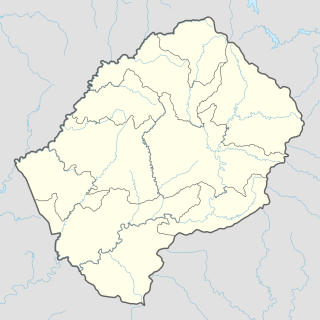
'Moteng is a community council located in the Butha-Buthe District of Lesotho. Its population in 2006 was 16,838.

The Sotho people, or Basotho, are a Bantu ethnic group of Southern Africa, native to modern Lesotho and South Africa, who speak Sesotho. The Basotho have inhabited that region since around the fifth century and so are closely related to other Bantu peoples of the region.
The site was developed almost entirely by local labour and artisans; therefore, most of the development costs have been ploughed directly back into the local community. This, in turn, has led to a strong sense of ownership of the facility by the local communities. [2]



